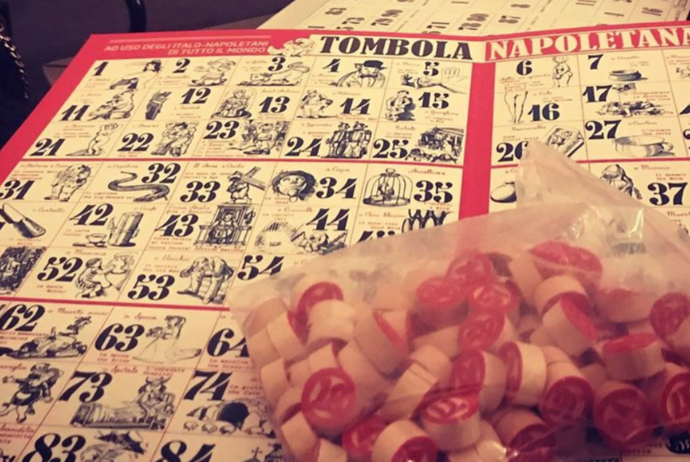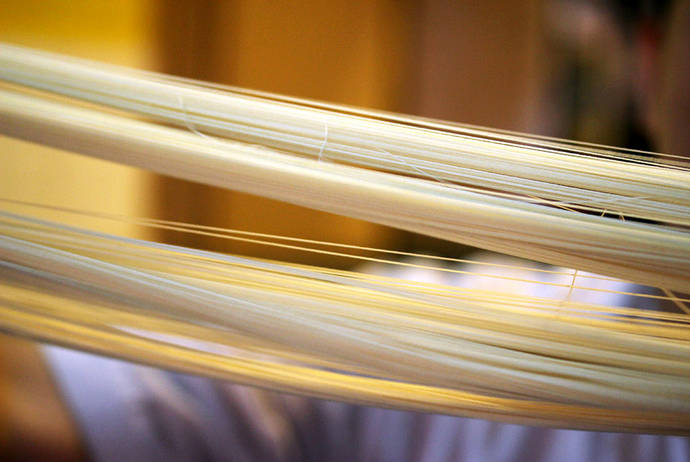Quale modo migliore di festeggiare a New York le feste che se ne vanno, se non con un aperitivo e una tombolata napoletana? Da Cacio e Vino di Giusto Priola questo è stato possibile.
Tra italiani, americani e newyorkesi provenienti da tutto il mondo, questo gioco da tavolo non è mai stato così internazionale.
La formula di successo della serata? Spritz + tombola. E sentirsi come a casa è stato un attimo.
Un’idea, quella della tombola, nata da due fratelli italo-americani, Gabriella e Giancarlo Carusone, con origini napoletane/laziali e l'amica Alaina Sinopoli che da cinque anni a questa parte portano ogni dicembre in giro per i ristoranti questa tradizione napoletana.
"L'idea iniziale è stata quella di un'organizzazione di giovani italiani e italoamericani di New York della quale facevano parte Giancarlo e Alaina dieci anni fa'", ci spiega Gabriella.
"Col tempo quel gruppo si è dissolto ma visto che la tombola era di Giancarlo - donatagli da nostro nonno - e Alaina nutriva una passione per organizzare eventi, hanno deciso di perpetuare questa tradizione. Vista la mia formazione di design, Alaina mi ha chiesto di unirmi a loro e così organizzammo il nostro primo evento cinque anni fa'".
Una serata di giochi che parte come improvvisata tra amici ma che si spinge poi oltre: "Ogni anno la location e il tema cambiano. Selezioniamo locali italiani a New York e il nostro obbiettivo è di riunire la comunità," continua la giovane interior designer. "Quest'anno è stato un grande successo, con più di 60 partecipanti!"
Per alcuni una tombolata rappresenta l'infanzia e l'Italia, un senso di appartenenza alla nostra terra durante le feste natalizie. Mentre per chi non conosce questa tradizione, questa è un'occasione per scoprirla e sentire per un momento di essere in Italia.
La risposta negli anni è stata accolta con entusiasmo, tanti infatti gli italiani residenti a New York che non si sono persi nemmeno una tombolata.
Per il loro ultimo evento che si è tenuto il 10 dicembre 2019, il gruppo aveva scelto come location il ristorante Cacio e Vino. Un appuntamento che ha riscontrato un successo tale che Giusto Priola, il proprietario, ha deciso di riproporlo questo gennaio unendolo al suo aperitivo mensile con buffet.
Perciò, chi lì per un aperitivo o chi per giocare a tombola, i partecipanti della serata hanno potuto godere di un salto nel passato attraverso gli odori di casa come quello della pizza appena sfornata o delle arancine/arancini ancora fumanti.
Il tutto accompagnato dalle bollicine dello spritz e dal rumore del panariello che sheckerava rumorosamente i dadi. A gran voce i numeri della tombola annunciati sia in italiano che in inglese.
Una serata newyorkese di sole usanze italiane, che molti hanno voluto rivivere o vivere per la prima volta. Una esperienza 100% italiana.
-----
Per maggiori informazioni e per partecipare alla prossima tombolata annuale, potete visitare il sito gestito da Gabriella e Alaina.



































